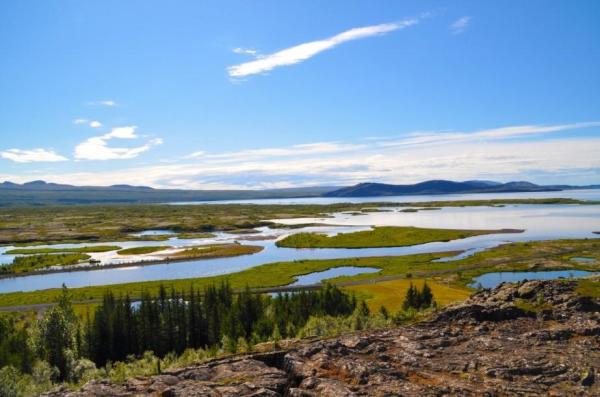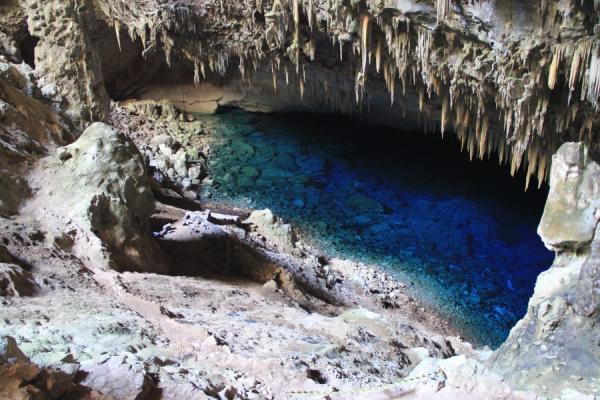
Inland waters are permanent bodies of fresh water lying on or below the surface of the earth. Except for estuaries and other watercourses, these waters are distant from coastal areas. They are areas whose characteristics and uses are characterized by permanent, seasonal, or intermittent flooding. These waters are fundamental to the survival of humans and thousands of species that depend on them. However, most of these waters are polluted primarily due to irresponsible human actions.
In the following article by thedailyECO, you will learn what inland waters are, their characteristics and their importance.
What are inland waters?
Inland waters are permanent bodies of water located inland, far from coastal areas. Some inland waters include rivers, lakes, floodplains, reservoirs, wetlands, and inland saltwater systems.
The origin of inland waters is varied. Sometimes they are formed by precipitation in the form of rain, hail, or snow, or by the presence and upwelling of groundwater.
In the following sections of this article, we will look in more detail at the characteristics, types, and importance of inland waters to learn more about these outstanding aquatic ecosystems.

Main characteristics of inland waters
We can better understand inland waters by examining some of their main characteristics:
- Not all inland waters are made up of fresh water. They may be fresh water, salt water, or a mixture of both (brackish water). Inland waters include the Caspian Sea (fresh water) and the Dead Sea (hyper-saline).
- They account for 2.7% of the hydrosphere.
- Inland waters include a wide variety of bodies of water, such as lakes, rivers, ponds, streams, groundwater, springs, cave waters, floodplains, and bogs, swamps, and marshes, traditionally grouped together as inland wetlands.
- They depend on certain conditions of phenomena such as floods, rainfall, snowfall, and river overflows or sea level rise.
- They may be permanent, seasonal, or even intermittent.
- They exist everywhere, except for marine areas and polar ice caps, which consist of fresh water, but rarely in liquid form.
- They may be polluted for natural or anthropogenic reasons. The former include phenomena such as eutrophication or excessive accumulation of nutrients and organisms. The most common anthropogenic causes of pollution, on the other hand, are the discharge of polluted wastewater and water containing toxic substances from industry, mining, or agriculture. In most cases, these waters contain chemical fertilizers and highly polluting pesticides.
Types of inland waters
Most of the water contained in inland waters comes from precipitation, whether in the form of rain, hail, or snow. Some of this water collects on the land surface, forming inland surface water. Another portion percolates through rock and porous material to form inland groundwater. Finally, one-third of this water evaporates and returns to the atmosphere.
Among these two large groups of inland waters, there are the following types:
Surface inland waters
- Streams
- Creeks
- Rivers
- Lakes
- Lagoons
- Swamps
- Wetlands
- Floodplains
- Glaciers
- Salt lakes in semi-arid regions
Underground continental waters
- Aquifers
- Underground springs
Although there are many more different types in the category of inland surface waters, the latter is extremely important for sustaining life as we know it. In the next section, we will discuss in detail the importance of the two types of inland waters.

Importance of inland waters
Inland waters are of great importance. Many species of animals and plants, including humans, depend on them for survival. They are also essential for the proper functioning of the Earth's entire ecosystem.
Inland waters are used for crop irrigation, livestock, recreation and leisure, as well as hydropower and some other industrial purposes. Throughout history, cities have been built near inland waters by various human civilizations. Underground inland waters are of vital importance and have many advantages for humans compared to surface water storage.
Surface water occupies only small areas, while aquifers can extend over large regions. In addition, the volumes of water stored in aquifers are much greater than those that can be regulated at the surface. This means greater regularity in the amount of water available, as aquifers are less sensitive to seasonal fluctuations.
Finally, groundwater is of better quality as drinking water than surface water. Most bottled water comes from springs or underground catchments.

If you want to read similar articles to What Are Inland Waters?, we recommend you visit our Ecosystems category.
- Guerrero, R. & Piola, A. (1997) Masses of water in the Argentine Continental Shelf. Review the Argentine sea and its fishing resources . Volume 1, pp: 107-118.
- Quirós, R. (2000) The eutrophication of the continental waters of Argentina. Ibero-American Cooperation Program for Science and Technology for Development (CYTED ), pp: 3-8.
- Ramírez, A., Restrepo, R. & Viña, G. (1997) Four contamination indices for the characterization of continental waters. Formulations and application. Colombian Petroleum Institute, CTF, volume 1 (3), pp: 2-7.